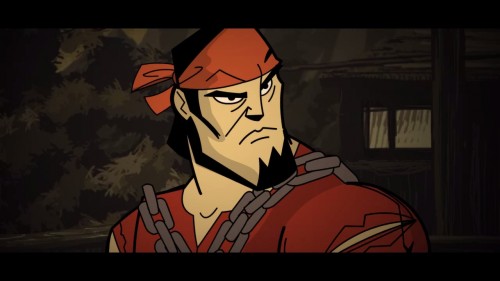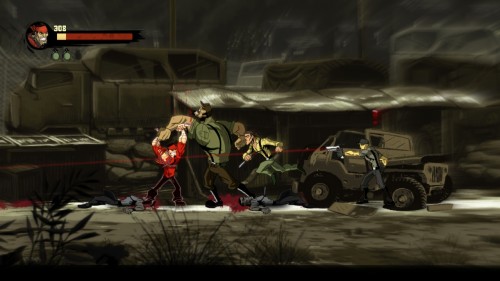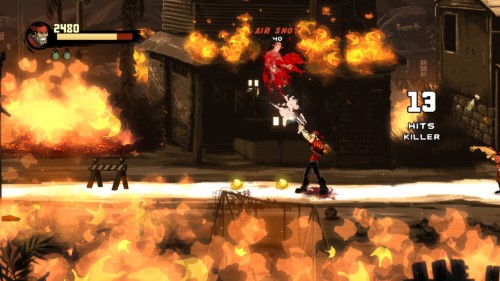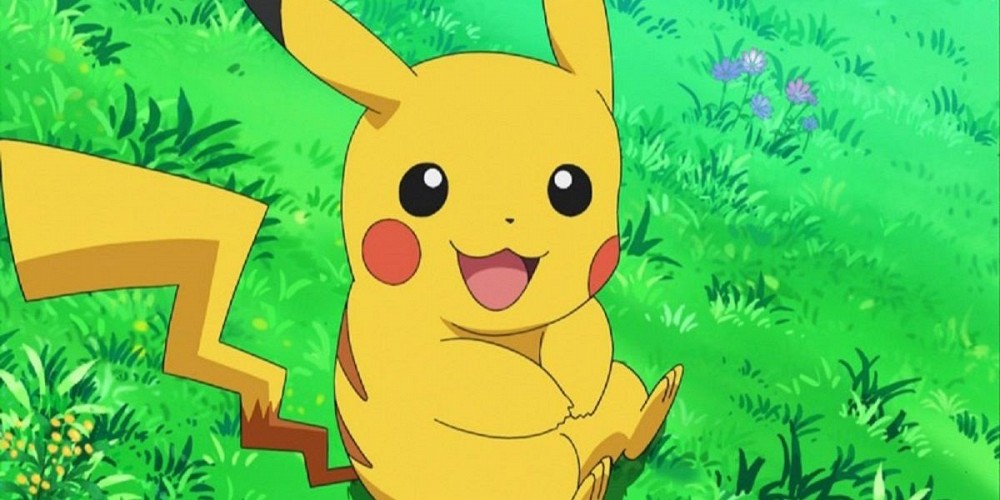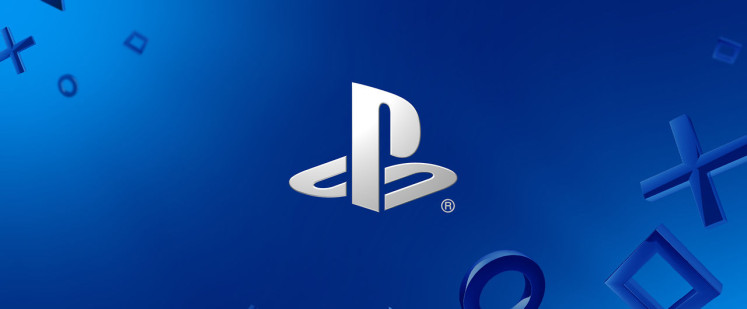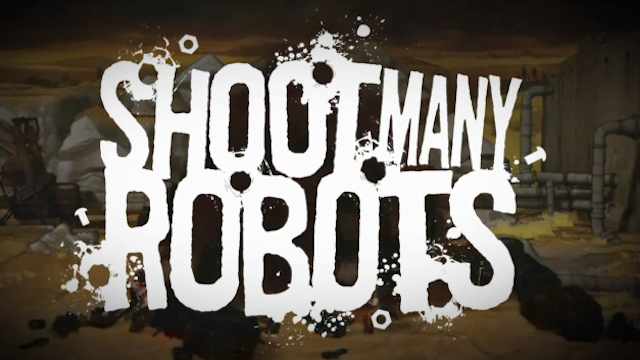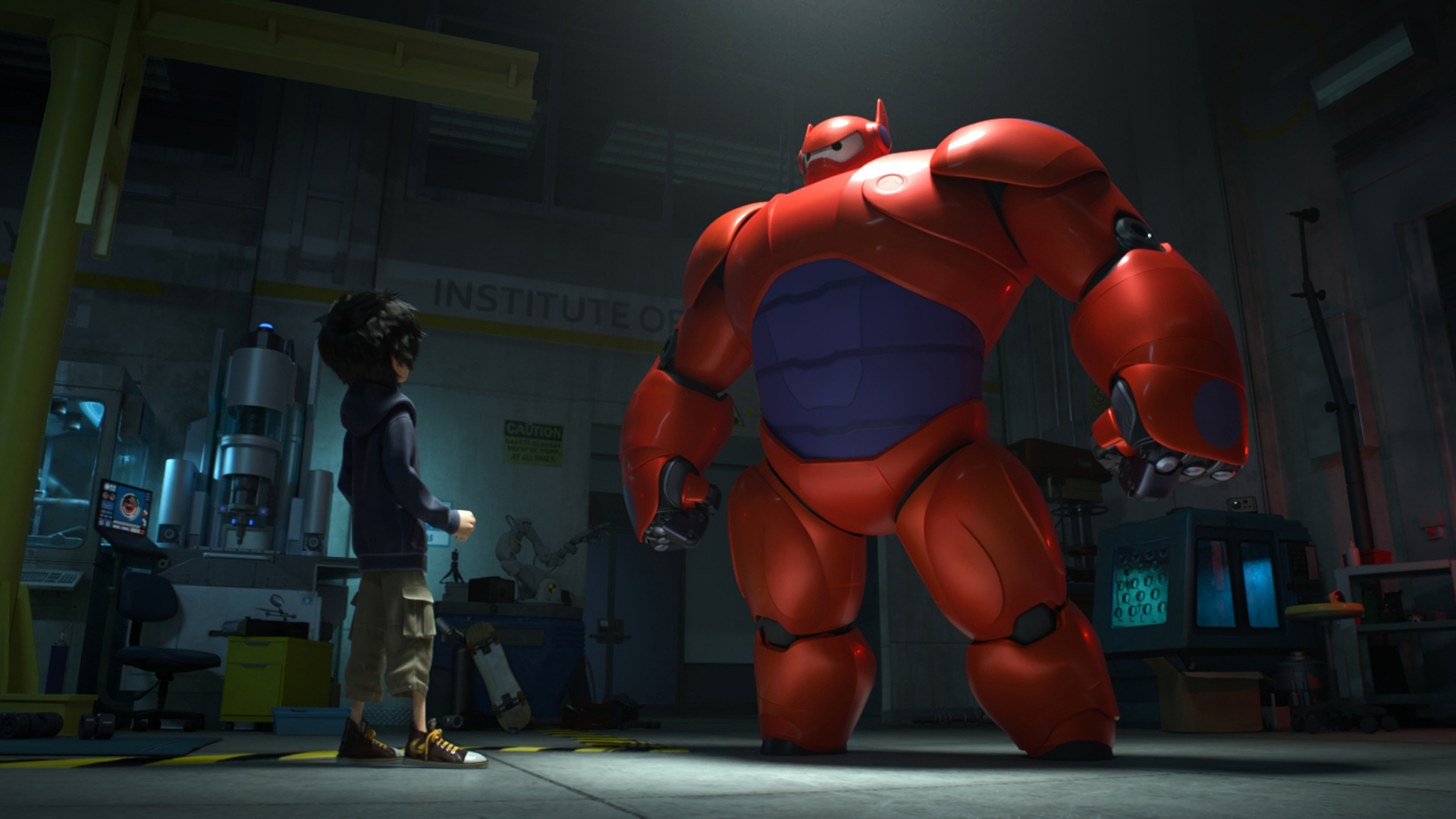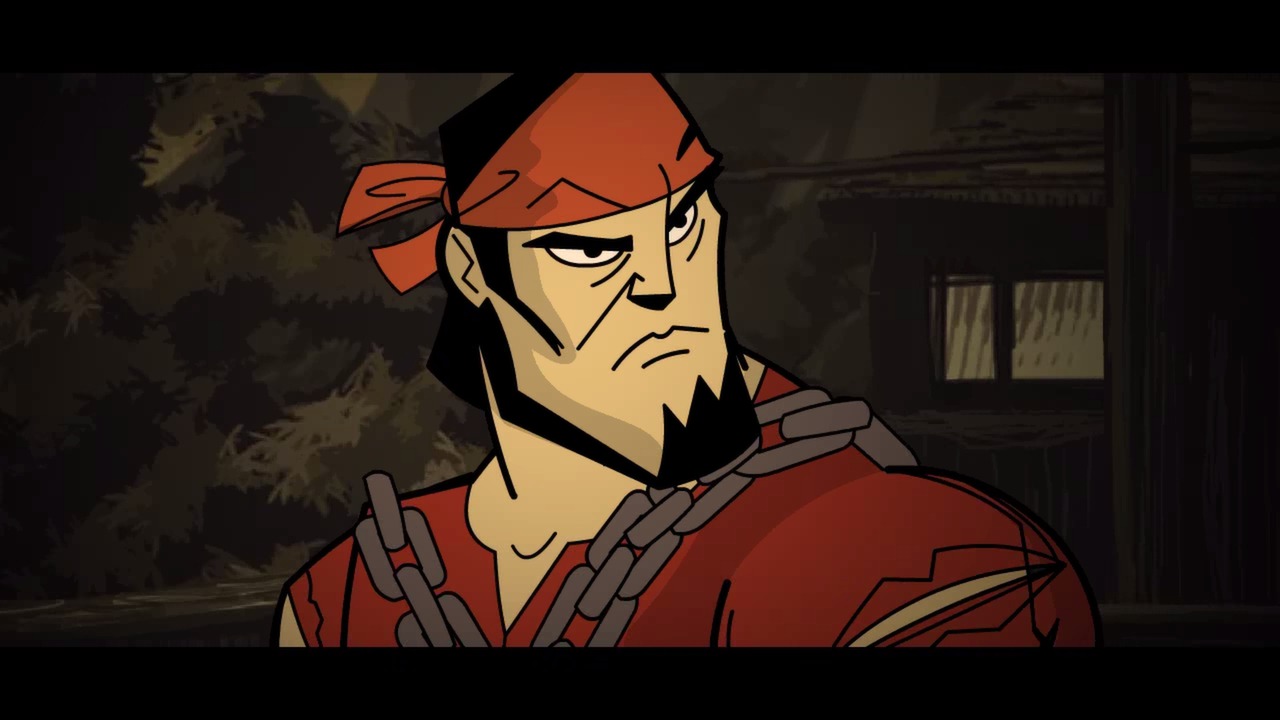
The bite-sized side scrolling beat-em-up Shank received a mostly positive reception upon it’s release in 2010. It featured an exciting blood drenched story lead by a square jawed mid-80′s action film protagonist, attractive comic book inspired art, and grounded brawling mechanics that allowed players to shoot, slice and bash waves of enemies into combo’d oblivion. Shank was more or less Brock Samson from The Venture Bros. in video game form, and people enjoyed it.
A couple of years later and we’re now sitting on a sequel, strangely given a blink-and-you’ll-miss-it release across PC, Xbox 360 and PlayStation 3 digital distribution services. The perception of an unexpected release can likely be attributed to the sequel’s striking similarities to it’s predecessor, as both games featuring a near identical combat and control system. Those who played the first will be able to jump right in, immediately understanding Shank 2‘s balance of light attacks (or shanks, as the game calls them), heavy attacks, ranged weaponry, and combinations thereof to juggle and combo bad dudes. Mix in a simple grapple and dodge system, andShank 2 has all the fundamentals in place that you’d expect from a competent brawling system.
Thankfully, rather than literally copy & paste the combat system, developer Klei Entertainment has taken a few steps to bring the mechanics forward after the original game, notably improving the responsiveness of dodging, detection of hits, collision detection of weaponry, and environment navigation. Shank himself moves and flows between actions a lot quicker and smoother, or at least seems to, and as a result the game is less prone to frustrating combat scenarios, though sadly not immune. Cracks in the combat system begin to show up as the screen throws large waves of enemies at the player, leading to a busy screen of enemies and difficult differentiation between enemy types, the player’s position, and what exactly is going on amidst the carnage. Stronger enemies equipped with stun attacks and stun-immunity animations, clash with Shank’s short ranged rolling dodge. This leads to players rolling from one enemy attack directly into an unbreakable attack from another. First time players may also have a some difficulty matching enemy animations with their programmed attacks, which can be hard to spot and predict in busy fights, resulting in a little bit of trial-and-error game design, especially in early stages or when faced with new foes.
On the plus side, these moments of frustration are uncommon, as the game does a good job of equipping Shank with all the right attacks and abilities to counter the pleasantly large variety of enemy types and creative boss design, to better exploit their weaknesses and quickly bring about their end. Shank’s instant counter move is particularly invaluable for keeping larger foes temporarily stunned while you deal with faster ones, meanwhile lunging is an excellent maneuver for escaping packs of enemies and leaping onto another, even if it is largely up to the game’s discretion as to who exactly you’ll be landing on. One of the more obvious improvements in the sequel is a larger variety of weapons, both for Shank to unlock and steal from fallen enemies. Each of these weapons temporarily replaces Shank’s standard heavy weapon, and most come with their own unique attacks and abilities for varied styles of play. Scooping enemies into the air with a gigantic shovel, followed by a blast from your shotgun before they hit the ground, is second only to beating enemies senseless with a fish.
Driving Shank 2′s level progression and structure is a fairly typical action movie plot: rebels, kidnappings, revenge, and so on. Told through brief animated cut scenes, it’s hardly anything to knock your socks off, but it fits the game’s mood and style perfectly, with a fast pace that serves as a platform for quick character introductions, as well as set piece variety, without spending too much time dwelling on unnecessary details. The pace of the story translates well into level design too, with each stage short, punchy and equipped with small set pieces and gimmicks such as manning mounted machine guns, and sliding down rooftops, to keep progression interesting between encounters. But don’t expect too m any outrageous gimmicks and surprises, as Shank 2 keeps its combat fundamentals in the limelight, as a backbone for the entire experience, and for better or worse is the main reason you’ll continue playing through to completion.
The whole game is presented with the original game’s same Flash-like comic book art style, which closely resembles the aforementioned The Venture Bros. cartoon series, thanks to thick black outlines and dark shading. Lively animation on characters, highlighted by the colourful cast of bosses, brings out simple yet strong personalities to give each character a distinctive look and feel, and stages themselves are painted with impressive details and effects. Jungle stages, around halfway through the game, had some particularly impressive rain and silhouette effects. The soundtrack is composed mostly of heavy rock riffs and wailing guitar solos, again perfectly suited to the gruff action-movie motif, and is catchy enough to stick in your head after putting the controller down.
As eye pleasing as the presentation is, a few quirks gave the impression of rushed development, first and foremost of these being strange framerate skips and drops as levels streamed in new data, and though subtle enough to never negatively impact an otherwise smooth experience, they’re surprising given the relatively low-tech nature of the engine. In addition, a few cut scenes seemed to end a abruptly and featured pixel artifacts on their fade to black, and some specific data loads, such as resuming a half finished campaign, took a lot longer than expected. None of these issues are worth throwing throwing a tantrum over, but do show a game that could have maybe done with a little extra time in the oven.
Shank 2‘s longevity is entirely dependant on where you stand relative to arcade action games. As a beat-em-up at the core, it depends on players continuously replaying stages to unlock secrets and better their own skills, avoiding damage, dealing more, and performing tightly sewn together combos, all to boost end-of-level scores and crawl up the leaderboard. Matching personal bests against friends, and the rest of the world, is where brawlers tend to shine. The cost is in content itself.Shank 2‘s campaign is built up eight short chapters easily beatable (difficulty aside) in a single play session, potentially lowering value for players who’d rather not go back and complete the game on higher difficulties, unlock all the extra player skins and goodies, or strive for higher scores.
To extend game value, Klei Entertainment has included a new co-operative survival mode. Functioning similar to survival/horde style modes found in other games, two players can team up to protect supply caches from waves of opponents, earning cash for survived rounds and skillful kills, to buy meatier weapons and new equipment with the touch of a button. The mode does a good job of injecting boss-style characters and other gimmicks into the hectic survival waves, and can prove to be an addictive distraction from campaign, but much like the latter is dependant on players truly enjoying the core combat system and is still prone to aforementioned combat and presentation concerns.
The people most likely to be impressed by Shank 2 are fans of the original, due to similarities in game design and presentation. This isn’t a bad thing, mind you, forShank has quite a loyal entourage of fans who’ll more than happily jump in for a second round, likely to be impressed by tighter brawling mechanics and impressive presentation, even if it still has some ways to go to reach the highs of better designed, polished brawlers out on the market. Bonus points to fans who can grab a friend to make the most out of survival mode. However, those who failed to be swept up in the blood and guts mayhem of Shank are unlikely to be swayed by Shank 2, and would do best to find their brawling fix elsewhere.
Grounded combat system | Attractive art | Fun co-op
Encounter woes | Occasionally clustered visuals | Short single player

